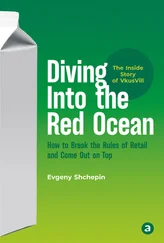Joseph J. Torres - Life in the Open Ocean
Здесь есть возможность читать онлайн «Joseph J. Torres - Life in the Open Ocean» — ознакомительный отрывок электронной книги совершенно бесплатно, а после прочтения отрывка купить полную версию. В некоторых случаях можно слушать аудио, скачать через торрент в формате fb2 и присутствует краткое содержание. Жанр: unrecognised, на английском языке. Описание произведения, (предисловие) а так же отзывы посетителей доступны на портале библиотеки ЛибКат.
- Название:Life in the Open Ocean
- Автор:
- Жанр:
- Год:неизвестен
- ISBN:нет данных
- Рейтинг книги:5 / 5. Голосов: 1
-
Избранное:Добавить в избранное
- Отзывы:
-
Ваша оценка:
- 100
- 1
- 2
- 3
- 4
- 5
Life in the Open Ocean: краткое содержание, описание и аннотация
Предлагаем к чтению аннотацию, описание, краткое содержание или предисловие (зависит от того, что написал сам автор книги «Life in the Open Ocean»). Если вы не нашли необходимую информацию о книге — напишите в комментариях, мы постараемся отыскать её.
Life in the Open Ocean: The Biology of Pelagic Species
Life in the Open Ocean: The Biology of Pelagic Species
Life in the Open Ocean — читать онлайн ознакомительный отрывок
Ниже представлен текст книги, разбитый по страницам. Система сохранения места последней прочитанной страницы, позволяет с удобством читать онлайн бесплатно книгу «Life in the Open Ocean», без необходимости каждый раз заново искать на чём Вы остановились. Поставьте закладку, и сможете в любой момент перейти на страницу, на которой закончили чтение.
Интервал:
Закладка:
Before leaving the properties of sound in the ocean, there is one more item of importance: the relationship between speed, wavelength, and frequency. Simply put,
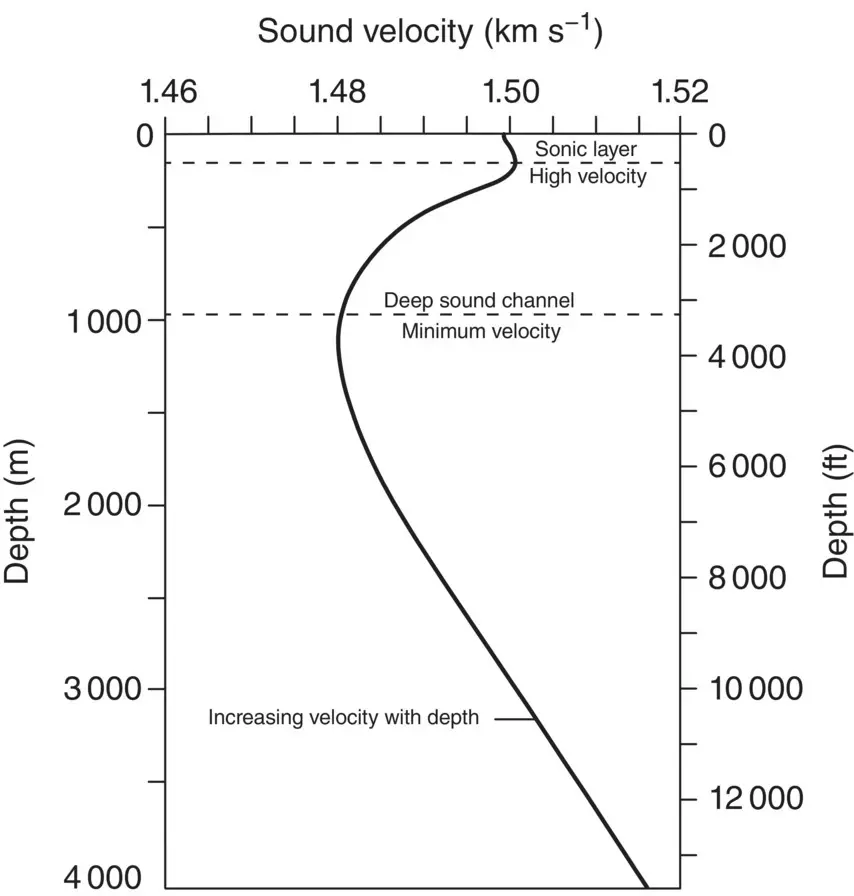
Figure 1.20 Velocity of sound in seawater as a function of depth. Maximum velocity at the bottom of the mixed layer. Minimum velocity at the base of the permanent thermocline.
(1.12) 
where c is the speed of sound (m s −1), f is the frequency (cycles per second or Hertz (Hz)), and λ is the wavelength (m). An important thing to note here is that the wavelength of sound in water is 4.3 times that of sound in air at equal frequency.
Light
Visible light is electromagnetic radiation, or light energy, with wavelengths between 400 nm (violet) and 700 nm (red), the sensitivity of the human visual system. Plants capitalize on the same range of wavelengths for the process of photosynthesis, so the 400–700 nm range is also known as photosynthetically active radiation (PAR). Visible light is a small segment of the total spectrum of electromagnetic radiation, which ranges from very high‐energy, short‐wavelength, gamma rays to the longer‐wavelength, lower‐energy radiation of radio waves ( Figure 1.21).
Light behaves as a particle (photons or quanta) and as a wave with a characteristic frequency and wavelength. The waves oscillate at 90° to the axis of movement and are called polarized if the photons have the axis of oscillation in the same plane. For normal light, the axis of oscillation is random between 0° and 180°. Polarized light is created by passing through a polarizing filter, by reflection off a surface (such as the surface of the ocean) or by scattering from small particles (Withers 1992).
The energy of a photon of light is an inverse function of its wavelength, which is expressed as:
(1.13) 
where E is the energy of a photon (joules) – joules (J) are the SI unit for energy = 0.24 calories, h is Planck’s constant (6.626 × 10 −34J s), υ is frequency (s −1), λ is wavelength (m), and c is the speed of light (2.998 × 10 8m s −1)
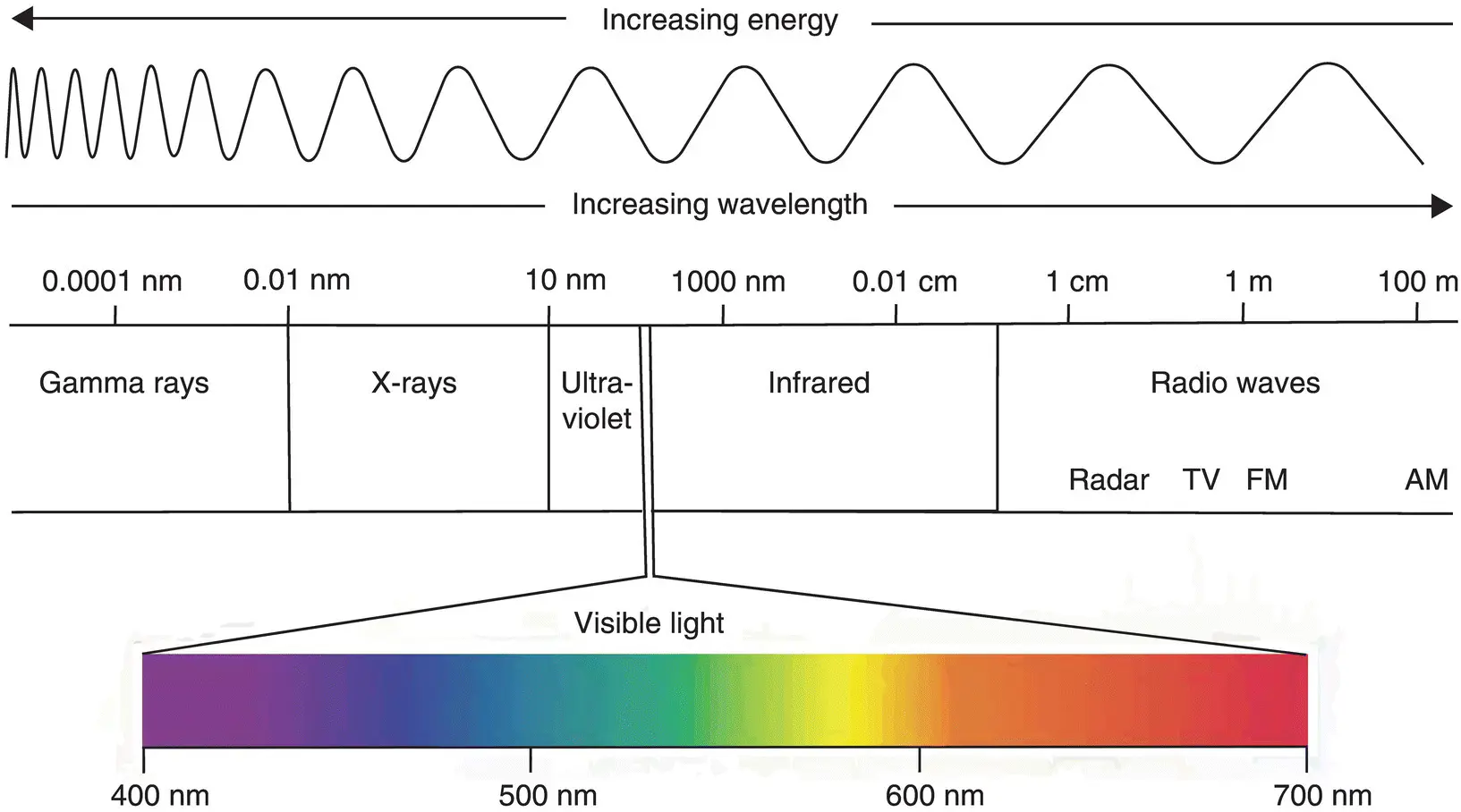
Figure 1.21 Total spectrum of electromagnetic radiation.
The equation may be rearranged:
(1.14) 
where the energy of a photon of light varies from about 170 kJ mol −1in red light to 300 kJ mol −1in violet light. A mole is Avogadro’s number (6.022 × 10 23) of photons.
Absorption and Scattering
When light impinges upon a molecule of water or a gas (or upon any form of matter), it may be either scattered or absorbed. When absorbed, the energy of the photon is entirely retained, at least for a while. When scattered, the energy of the photon is re‐emitted as another electromagnetic wave of the same wavelength and is scattered in all directions. Both processes are highly wavelength‐dependent.
The wavelength of light that is maximally absorbed is an inherent property of a substance, a convenient property of matter that is exploited in a variety of ways, e.g. in spectrophotometry. In contrast, scattering of light is proportional to the inverse fourth power of the wavelength ( λ −4), which means that blue light is scattered far more readily than red. The blue sky above us is a result of the differential scattering of light by Earth’s atmosphere. Similarly, the blue water of the open ocean is partially the result of the same phenomenon, though it is also influenced by the reflection of the sky.
Both absorption and scattering contribute to the attenuation of light in the open ocean. A beam of light traveling over a distance loses part of its energy, whether it be in air or water. The relationship is expressed as Lambert’s law:
(1.15) 
where I 0is the intensity of the incident light, I xis the intensity after traveling through distance x , and α λis the attenuation coefficient, a function of wavelength.
The attenuation coefficients for the different colors of light are quite different in water from those in air ( Figure 1.22). Even though blue light is the most prone to scattering, it is attenuated the least with water depth. As a consequence, the character of light changes drastically with depth, a situation that must be reckoned with by the life in the open ocean. When light reaches a depth of 500 m, its wavelength has been narrowed to a very small range on either side of 480 nm in the blue and its intensity has been drastically reduced.
Three vertical zones are recognized in the ocean based on the availability of light. The first one is the euphotic zone, where the intensities and wavelengths of light are sufficient to support growth and reproduction in plant life. The bottom of the euphotic zone is defined by the compensation depth where photosynthesis (energy production) balances respiration (energy consumption) in plants. Two equations apply (after Lalli and Parsons 1993). The first is a simplification of Eq. (1.15):
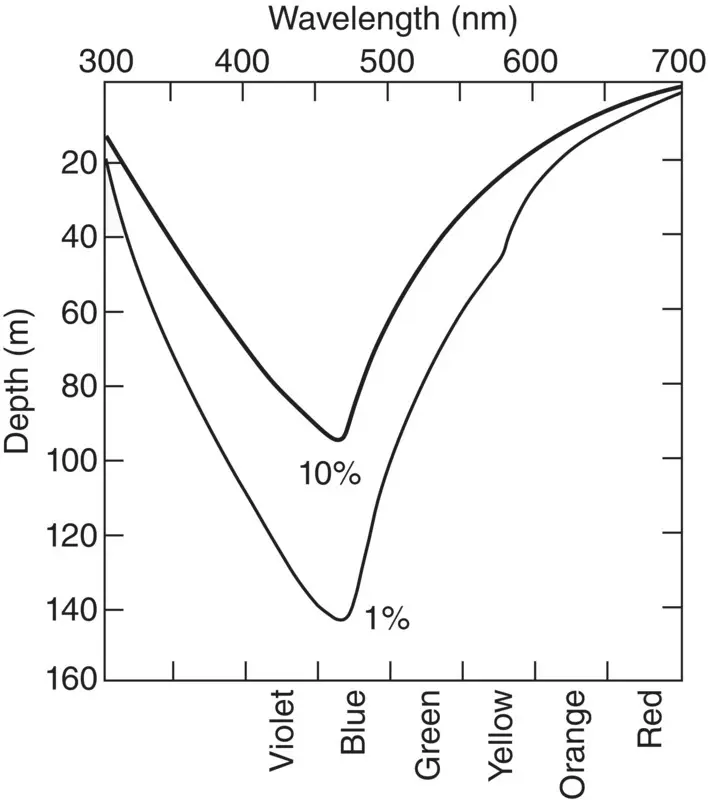
Figure 1.22 Attenuation of different wavelengths of light as a function of depth.
Source: Lalli and Parsons (1993), figure 2.4(p. 25). Reproduced with the permission of Pergamon Press.
(1.16) 
where I 0is the intensity of light at the surface, I Dis the intensity at depth, and k is the extinction coefficient of the seawater at that location (usually for the wavelength 550 nm), where ln denotes the natural logarithm. The second defines the compensation depth itself:
(1.17) 
where D cis the compensation depth, I 0is the light at the surface, and I c, the compensation light intensity is an experimentally determined value that ranges between 0.001 and 0.01 cal cm −2min −1depending on the type of dominant algae and how well it gathers light.
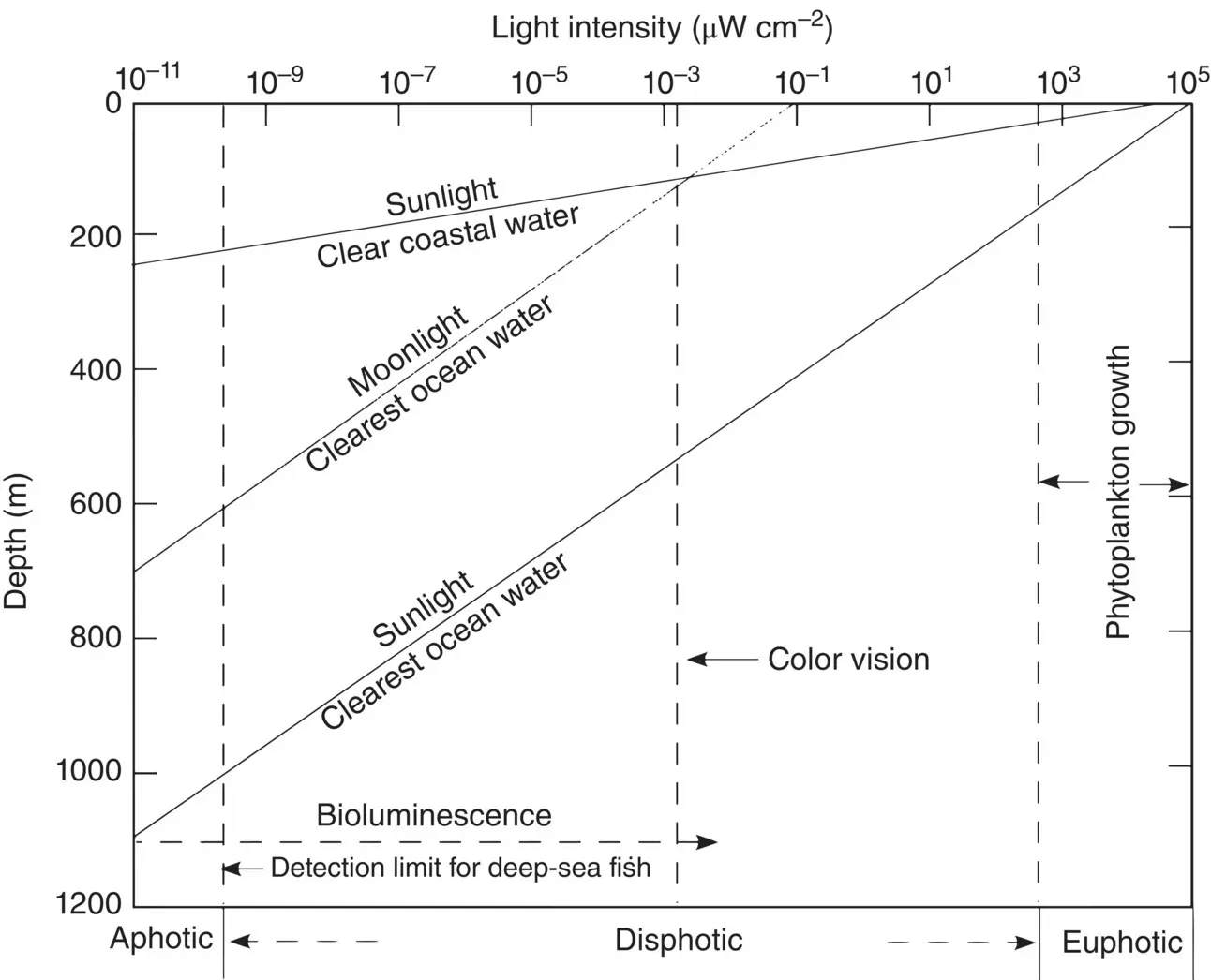
Figure 1.23 Light intensity and photic zonation as a function of depth in coastal and open ocean environments.
Source: Lalli and Parsons (1993), figure 2.5(p. 26). Reproduced with the permission of Pergamon Press.
Читать дальшеИнтервал:
Закладка:
Похожие книги на «Life in the Open Ocean»
Представляем Вашему вниманию похожие книги на «Life in the Open Ocean» списком для выбора. Мы отобрали схожую по названию и смыслу литературу в надежде предоставить читателям больше вариантов отыскать новые, интересные, ещё непрочитанные произведения.
Обсуждение, отзывы о книге «Life in the Open Ocean» и просто собственные мнения читателей. Оставьте ваши комментарии, напишите, что Вы думаете о произведении, его смысле или главных героях. Укажите что конкретно понравилось, а что нет, и почему Вы так считаете.






